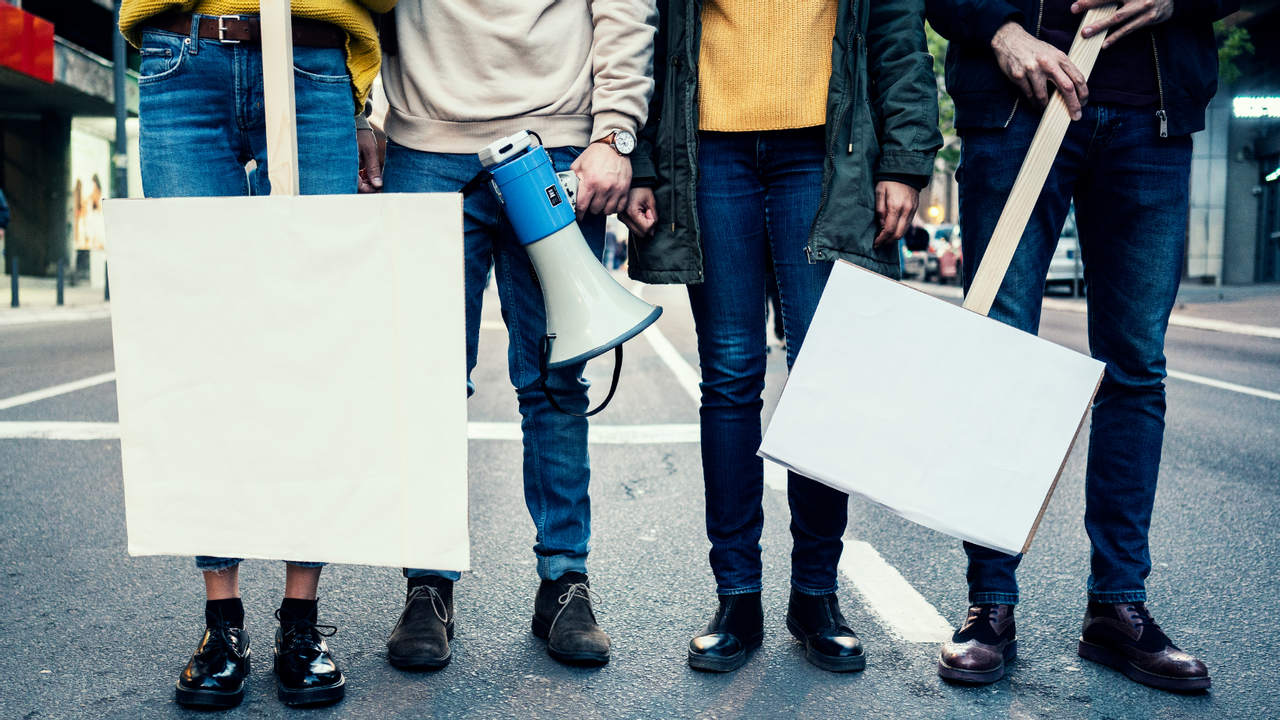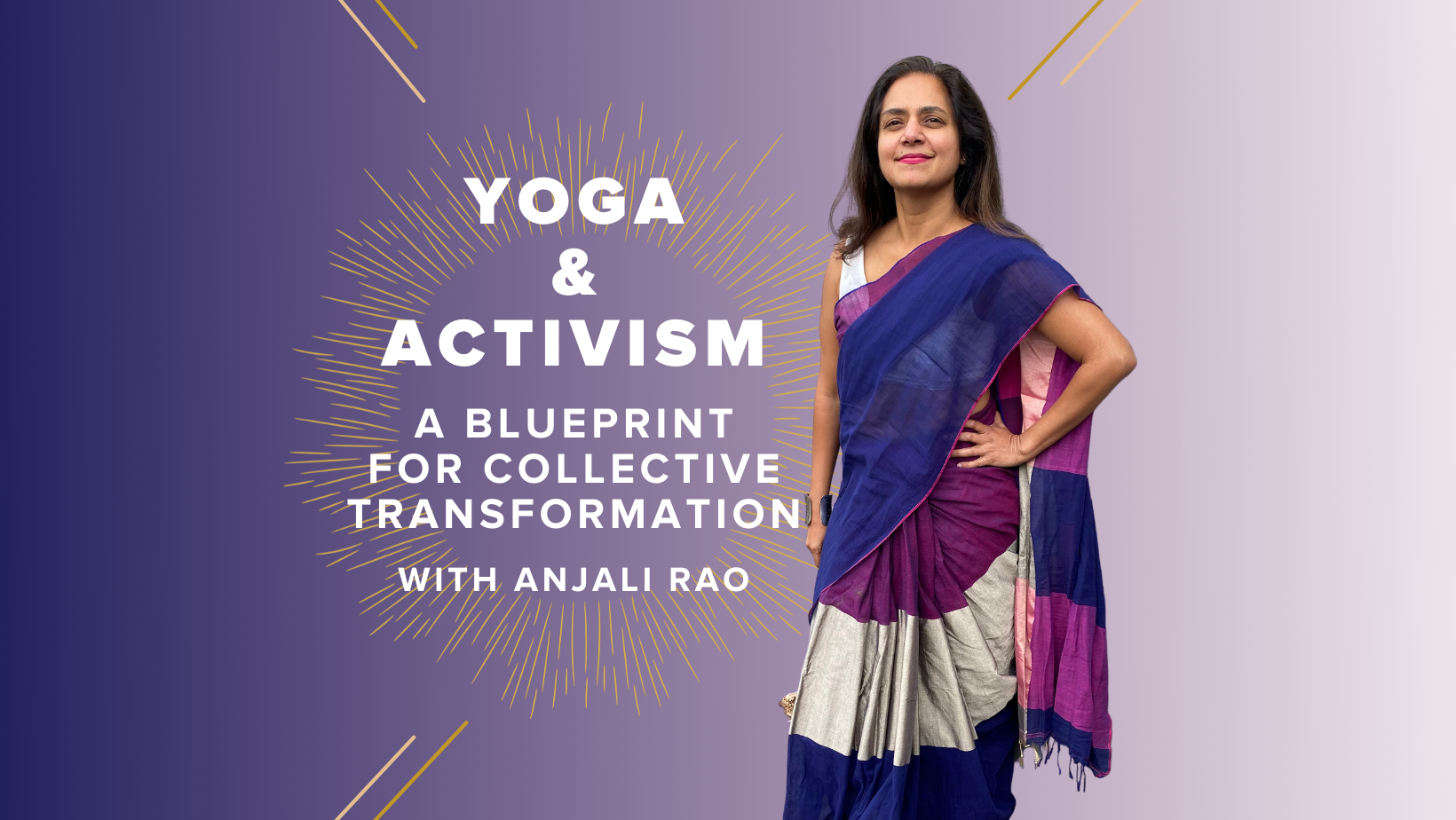Yoga and Activism

By Anjali Rao
How is yoga related to activism? Are you not moving away from the practice of yoga when you are “out there” being an activist? What does activism and yoga have in common? Is there anything in common at all?
These are questions many of us face as we learn of this ancient practice, as we educate other students, and as we seek to get involved in various causes as activists or advocates.
Yoga and activism intersect; for many of us, yoga and activism integrate seamlessly with one another.
Yoga is inner activism. The practice of yoga rests on a premise that we have the potential to transform our physical bodies and gain deeper insight into our mental and emotional selves. When we gain better insight into our own fears, strengths, sorrows, joys, intellect, potential, patterns of behavior, and our socio-cultural samskaras or conditioning, we expand our consciousness and look into the ways we move in the world around us. The Yamas and Niyamas offer a framework for the choices we make, our relationships, our work, and our communities. The vast Yogic container offers us agency and choices to liberate ourselves from that which doesn’t serve us well, and that which causes us suffering.
The Upanishads teach us that we are all a part of the Brahman or Universal Spirit—that which is immutable and immortal. The ancients teach us that we are deeply inter-connected and interdependent. Our actions and choices—social, political, or economic, have consequences and directly or indirectly impact one another. The Bhagavad Gita and Yoga Sutras extol the value of being active participants in our communities first, underlining our responsibilities and duties toward our families, for example. By polishing our own internal mirror—svadhyaya, by cultivating presence and discriminative discernment—viveka, we begin to look at the world as it is, with its beauty, complexity, ugliness, inequities...and our role in it all.
Yoga helps build capacity for action. Through the practices, we learn how to sit with our discomfort and notice our pain and our aversions. We also learn to be with the inherent complexities and paradoxes of a dominant culture in which white, heterosexual, able-bodied, cisgendered identities dictate the norms and the values of all our lives. These are also the dominant identities of those who develop and protect systems and institutions of exclusion and/or oppression of those who don't belong to these same identities.
Activism is defined as the use of direct and noticeable action to achieve a result, usually a political or social one (Cambridge dictionary). For any given cause, there are many kinds and levels of activism. Each of us are learning where we land in the spectrum, where we have agency and what is that we are drawn to change. We are compelled to work towards the causes that resonate the most with us, perhaps because of a personal experience or that of a loved one, perhaps by what we are witnessing in the world around us, or by our own inner inclinations toward action. One can say that activism is also a practice that involves noticing what and who is causing harm, acting to disrupt systems that uphold that which causes harm, and/or build and advocate for new systems. It is a practice because the work is never really “done” or complete—it is on-going, imperfect with no clear beginning, middle, and end.
Throughout history, yoga and activism have been inextricably linked, seamlessly integrated into one another. Yoga history offers us rich examples of those who embody their activism—from women and gender non-conforming folks who challenged gender norms and expectations during the Vedic period, to the Bhakti poets who used the beauty and power of their bodies and voices to defy caste hierarchy, to Mahatma Gandhi and Bhimrao Ambedkar, political leaders who were greatly influenced by the teachings of the Gita and Buddha, and who shaped the socio-political landscapes around them. Here in the United States, Angela Davis and Martin Luther King Jr. have cited yogic principles and practices as inspirations for their own illustrious leadership in the civil rights movement.
Some may even say that the two are not separate at all—that to be a “yogi” is to be an activist. Yoga is rooted in taking mindful action toward our own liberation, and activists are yogic because activism is rooted in making efforts to reduce and eliminate human suffering. Both yoga and activism are born from the two alchemical ingredients: hope and love. We as human beings are drawn toward hope for ourselves, for our loved ones, and for freedom in our inner and external lives. It is hope that keeps us moving forward in the face of daunting challenges, and it is love that propels us into action. We hope for a better world, a safer world, a kinder world, a healthier world, a world full of joy and less suffering. We hope and therefore we are.
 About The Author
About The Author
Anjali Rao is a yoga teacher, social justice activist, multi-cultural training specialist, and a cancer survivor. She is an Indian American immigrant from Bangalore, India. Her work explores yoga philosophy and history integrating marginalized voices using story- telling, imagery and poetry. She teaches intensives integrating social justice and yoga, is a part of teacher training faculty, conducts workshops and is a speaker at wellness conferences.

Interested in learning more?
Join Anjali Rao for her upcoming course,
Yoga & Activism: A Blueprint for Collective Transformation.
This 15hr CE program will integrate tenets of yoga philosophy along with concepts from sociology to help students build capacity as activists.
Program runs from June 20 - July 18, 2021.
Tiered pricing, payment plans, and partial scholarships are available.

